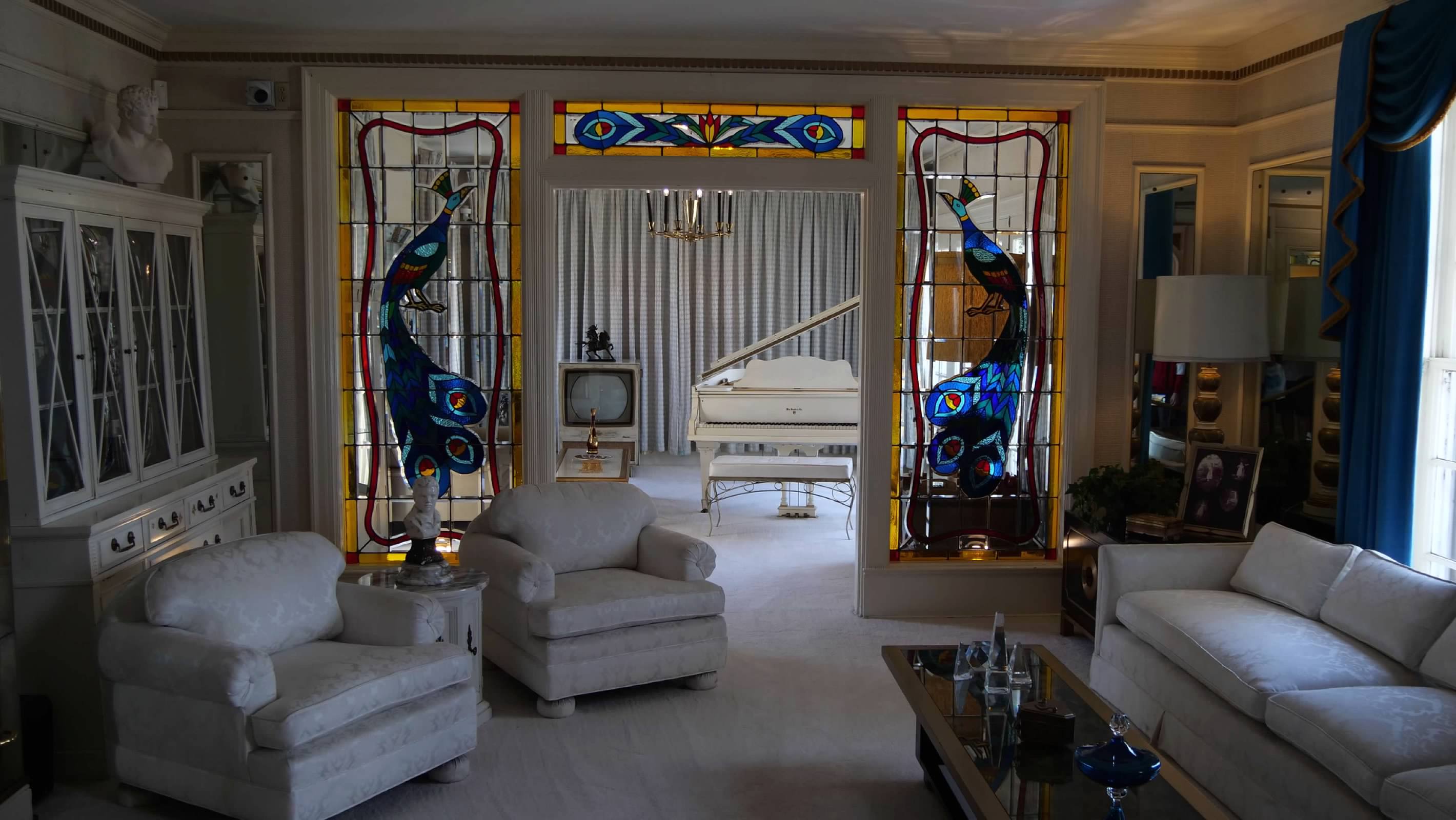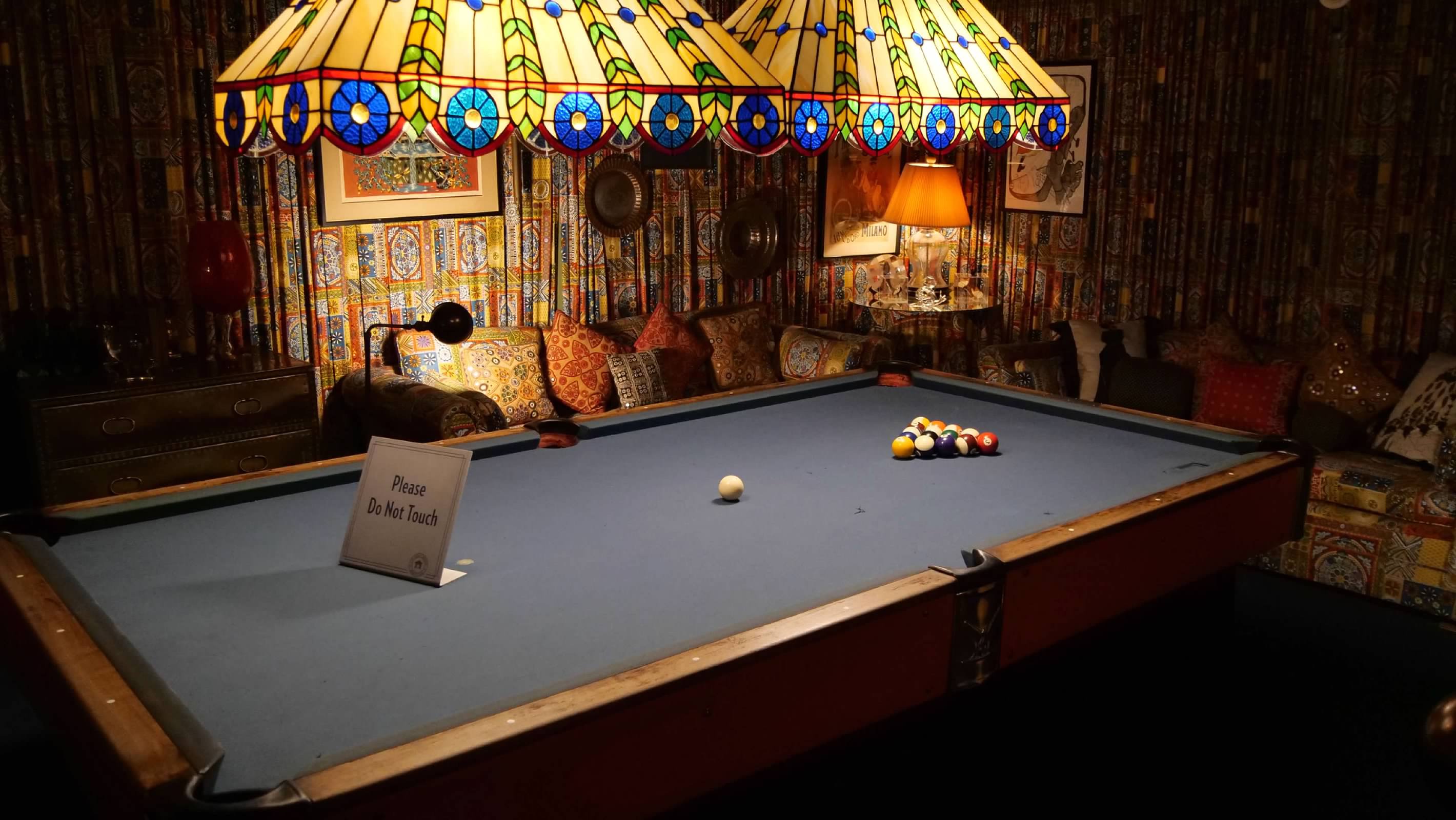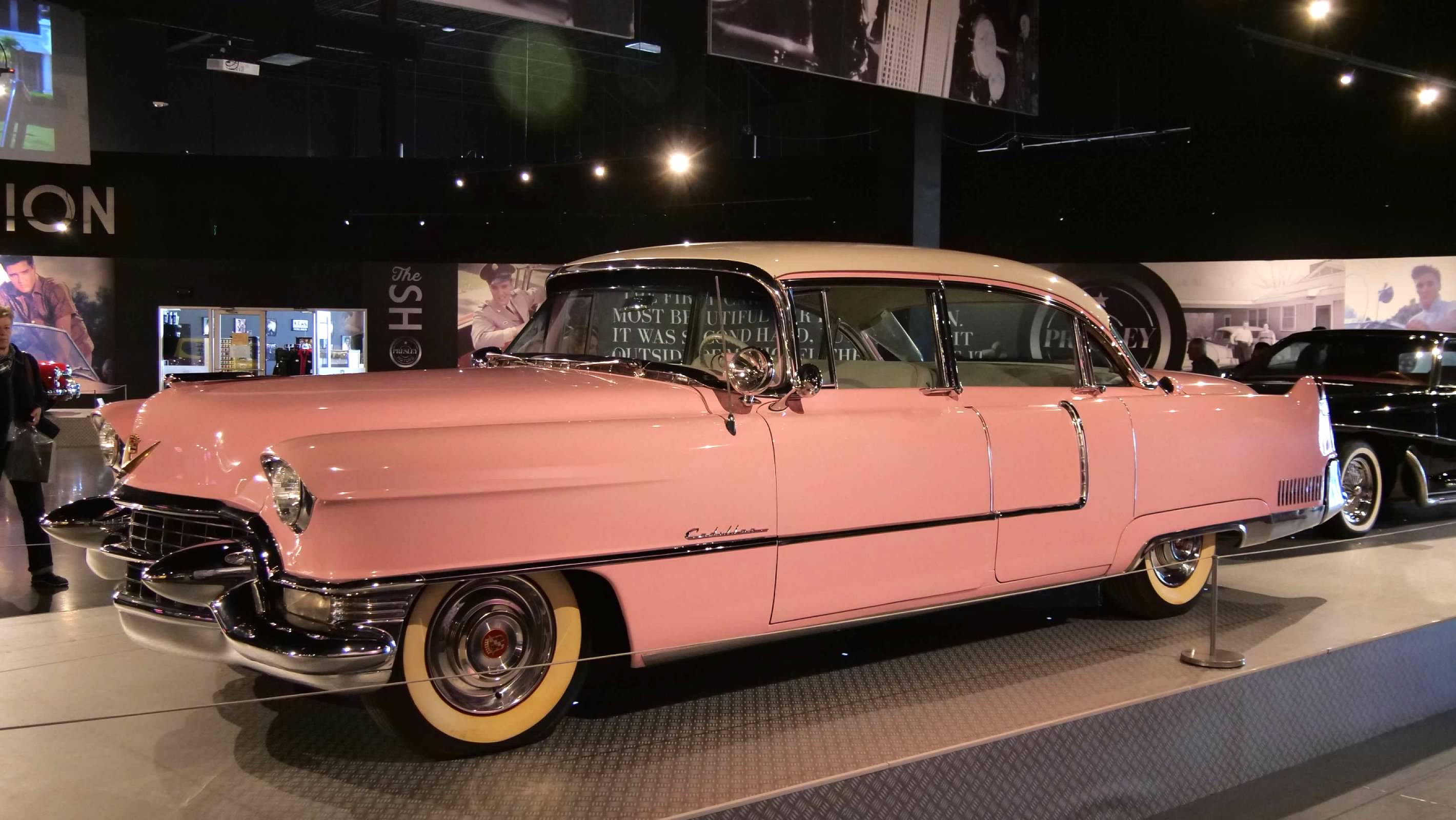Entry tags:
Discovering Graceland
Over the years, we've driven through or past Memphis several times on various trips out west. But, somehow, we never took the time to pull off the highway to visit Graceland. Part of that might be that while I enjoy Elvis Presley's music, I am by no means a huge fan and I never felt an overwhelming pull to make a pilgrimage to his home and/or grave. Couple that with the overall impression I had that suggested that Graceland was a gaudy, cheesy spectacle that reflected the larger than life personality that Elvis has become associated with (however unmerited that reputation might be). For what ever reason, Graceland had never really been on our travel agenda.
So, as I was beginning to look for places to visit on our trip to and from Arizona, I pretty quickly added Graceland to the list. It felt like it was one of those cultural touchstones that we should experience once, even if we never revisited it again. In my initial itineraries, this was the second stop on the trip, but as I did more research and tried to figure out the timing of our stops, the earlier stop ended up dropping off the list, leaving Graceland as our first destination along the road.
In order to be sure we had tickets and didn't arrive to find things sold out, I purchased our timed-entry tour tickets online ahead of time, so we had a specific time we needed to be there for our tour of the home. But in order to keep our driving times sane, we only drove as far as Nashville the first day, so we needed to get up fairly early to make sure we weren't late getting to Memphis and Graceland. As it turned out, we actually arrived a little bit early. Because the earlier tours weren't fully sold out, the staff allowed us to join an earlier tour, which ultimately allowed us to spend a little more time here than we were originally planning. And that was fortunate, because we found Graceland to be unexpectedly interesting. After a short introductory movie at the visitor's complex across the street from the actual home, we boarded a bus that transported us across the street and dropped us at the front entrance to the house. I was initially surprised by how modest this house actually was. Somehow, in my mind, this was an enormous mansion. But the reality is that it is surprisingly small, and while Elvis expanded it considerably, those changes are not readily apparent from the front of the house.
After a short introductory movie at the visitor's complex across the street from the actual home, we boarded a bus that transported us across the street and dropped us at the front entrance to the house. I was initially surprised by how modest this house actually was. Somehow, in my mind, this was an enormous mansion. But the reality is that it is surprisingly small, and while Elvis expanded it considerably, those changes are not readily apparent from the front of the house.
And that would not be my only surprise on this tour. Inside, instead of the cheesy, over-the-top spectacle that I had conjured in my imagination, what we actually found was a time capsule. This is a home that is trapped in the mid-1970s, and in many ways resembles what a great many American homes might have looked like in that era. Granted, Elvis had a LOT of money and he wasn't afraid to spend it, but while he may have spared no expense in furnishing this home, nothing in it struck me as particularly garish or out of place for that period.
 The ground floor had a fairly conventional living room, dining room, and a very modern (for the 1970s) kitchen, all of which reminded me of what I remembered people's homes looking like in my childhood. The basement, with its high-tech (again, for the 1970s) entertainment room was more of a reflection of Elvis's wealth and love of entertainment, and while the room with the pool table, with its cloth lined walls and ceilings would be considered eccentric by today's tastes, really didn't strike me as out of place for the period in which it was furnished. The final room on the tour of the house proper was the "Jungle Room" (which is NOT what Elvis called this room...he called it the "den".) This is the room that is often talked about, with the shag carpet not only on the floor but also on the ceiling. While that is unusual, I didn't find the effect entirely weird, especially when you consider what it did for the acoustics of the room. I felt like that room was the truest reflection of Elvis's personality in the home, the place where he was the most comfortable.
The ground floor had a fairly conventional living room, dining room, and a very modern (for the 1970s) kitchen, all of which reminded me of what I remembered people's homes looking like in my childhood. The basement, with its high-tech (again, for the 1970s) entertainment room was more of a reflection of Elvis's wealth and love of entertainment, and while the room with the pool table, with its cloth lined walls and ceilings would be considered eccentric by today's tastes, really didn't strike me as out of place for the period in which it was furnished. The final room on the tour of the house proper was the "Jungle Room" (which is NOT what Elvis called this room...he called it the "den".) This is the room that is often talked about, with the shag carpet not only on the floor but also on the ceiling. While that is unusual, I didn't find the effect entirely weird, especially when you consider what it did for the acoustics of the room. I felt like that room was the truest reflection of Elvis's personality in the home, the place where he was the most comfortable.
 The rest of the grounds included the office, located in an out-building, where Elvis and his father ran his business, the stables where Elvis kept his horses (and which still houses horses today), a gallery that Elvis used to house his awards and career memorabilia, and which now includes displays tracing his time at the home and his career, the building Elvis build to house his racquetball court, and the cemetery where Elvis and his family are buried. It is clear that his grave has become a pilgrimage site for his fans, with tokens left by visitors surrounding it. We saw tokens from as far away as Luxembourg and Australia.
The rest of the grounds included the office, located in an out-building, where Elvis and his father ran his business, the stables where Elvis kept his horses (and which still houses horses today), a gallery that Elvis used to house his awards and career memorabilia, and which now includes displays tracing his time at the home and his career, the building Elvis build to house his racquetball court, and the cemetery where Elvis and his family are buried. It is clear that his grave has become a pilgrimage site for his fans, with tokens left by visitors surrounding it. We saw tokens from as far away as Luxembourg and Australia. After we finished our tour, we took a bus back across the road to the visitor center, where we explored the many other exhibits. They have an extensive collection of the cars Elvis owned, as well as an interesting exhibit about his time in the US Army. His private airplanes are open for visitors to walk through, and there is a large exhibit that shows the lasting impact Elvis has had on the music and entertainment industries.
After we finished our tour, we took a bus back across the road to the visitor center, where we explored the many other exhibits. They have an extensive collection of the cars Elvis owned, as well as an interesting exhibit about his time in the US Army. His private airplanes are open for visitors to walk through, and there is a large exhibit that shows the lasting impact Elvis has had on the music and entertainment industries.
 I found our visit to Graceland to be surprisingly interesting and informative, less of a spectacle than I expected and far more educational. I feel like I came away from our visit with a better understanding of Elvis as a person, as well as the outsized role he played in defining the worlds of music and entertainment as we know them today.
I found our visit to Graceland to be surprisingly interesting and informative, less of a spectacle than I expected and far more educational. I feel like I came away from our visit with a better understanding of Elvis as a person, as well as the outsized role he played in defining the worlds of music and entertainment as we know them today.
So, as I was beginning to look for places to visit on our trip to and from Arizona, I pretty quickly added Graceland to the list. It felt like it was one of those cultural touchstones that we should experience once, even if we never revisited it again. In my initial itineraries, this was the second stop on the trip, but as I did more research and tried to figure out the timing of our stops, the earlier stop ended up dropping off the list, leaving Graceland as our first destination along the road.
In order to be sure we had tickets and didn't arrive to find things sold out, I purchased our timed-entry tour tickets online ahead of time, so we had a specific time we needed to be there for our tour of the home. But in order to keep our driving times sane, we only drove as far as Nashville the first day, so we needed to get up fairly early to make sure we weren't late getting to Memphis and Graceland. As it turned out, we actually arrived a little bit early. Because the earlier tours weren't fully sold out, the staff allowed us to join an earlier tour, which ultimately allowed us to spend a little more time here than we were originally planning. And that was fortunate, because we found Graceland to be unexpectedly interesting.
And that would not be my only surprise on this tour. Inside, instead of the cheesy, over-the-top spectacle that I had conjured in my imagination, what we actually found was a time capsule. This is a home that is trapped in the mid-1970s, and in many ways resembles what a great many American homes might have looked like in that era. Granted, Elvis had a LOT of money and he wasn't afraid to spend it, but while he may have spared no expense in furnishing this home, nothing in it struck me as particularly garish or out of place for that period.